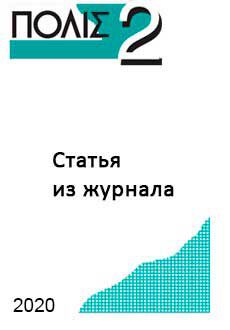Online shop of "Polis. Political Studies" Journal
We in the world, the world in us
Sarkisyan H.L. , Dunamalyan N.A. The Dynamics of Civil Identity Transformation in Modern Armenia: Factors and Subjects. – Polis. Political Studies. 2020. No. 2. P. 53-72. (In Russ.).
Free!
This paper is devoted to the issue of civil identity development in Armenia in the context of the protest movements of recent years that culminated in the “velvet revolution” in 2018. Through a comprehensive analysis, the authors aim to define the main factors that have had an influence on Armenian society’s civic consciousness transformation. The authors believe that it is necessary to take into account the specifics of the historical development of the Armenian people, not excluding the use of existing general methodological concepts (mainly created in the context of Western society’s development). Regarding the development of Armenian society’s civil identity, a significant place is given to the Soviet period, which, with all the positive and negative aspects of this era, contributed to the formation of a number of civic consciousness basic elements, which to some extent became the basis for the future independence movement. “Karabakh”, “Armenian army”, “state”, “historical past”, “tradition”, and “Christianity” are all concepts included in the symbolic portrait of modern Armenian citizenship, albeit with great reservations. These reservations are connected with the specifics of the construction of the Armenian national consciousness, on the basis of various elements that are formed during the conflict of cultural, confessional and civic identity models. In the post-Soviet period, social discourse in Armenia was built around the opposition of “ethno-national” and “state-centric” approaches. The construction of civic identity in this context directly depends on the development of society, since the level of “personalization” of political institutions has a close relationship with the degree of trust in them. The presented statistics confirm this by demonstrating the specificity of the transformation of civil consciousness before and after the “velvet revolution”, as well as defining the main trends of domestic policy and the development of Armenian society as a whole. The authors present an analysis of the main factors (change of generations, political culture, transformation of social protest into political), contributing to further research on the development of civic identity in the face of the new risks emergence and threats in the context of determining the optimal format of relations between the state and society.
 English
English Русский
Русский

Reviews
There are no reviews yet.